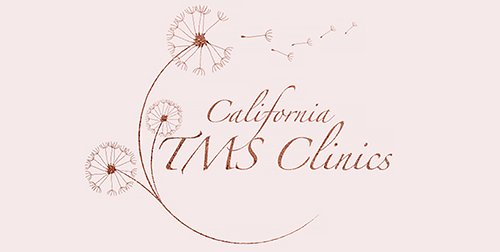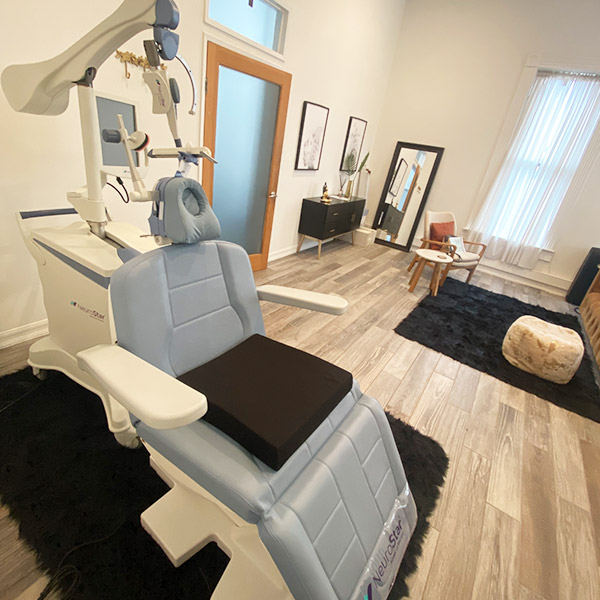Using TMS to Treat Addiction
Have you ever felt an intense craving for certain drugs that, after use, make you feel excited and happy despite their negative consequences on your health? This may be a sign of addiction that, without prompt treatment, can turn to loss of self-control, cause lung or heart problems like hypertension, cancer, or result in death or coma in extreme cases.

Addiction is a chronic medical disease whereby the part of the brain that involves reward, motivation, and memory becomes defunct. It’s characterized by an uncontrollable and compulsive physiological need for substances like heroin, alcohol, nicotine, and watching pornography.
Even though addiction is quite common and affects such a large percentage of the population, many folks are unaware that substance use disorders (SUD) are a mental health problem that physically impacts the brain. This can cause devastating consequences, including the breakdown of relationships, reduced work performance, poor physical health, and an adverse impact on personal finances. That's exactly why it needs to be treated as soon as possible.
Despite these issues having been studied by scientists for decades, treatments for nicotine addiction are still limited. TMS, or transcranial magnetic stimulation, is a non-invasive therapy that has been demonstrated to be effective in the treatment of depression. This article will address how TMS therapy and nicotine addiction can do wonders when paired together.
Signs & Symptoms of Addiction
The signs of addiction vary depending on the type. However, there are several common signs/symptoms prevalent in most types of addiction, including:
- Mood swings increased temper, tiredness, defensiveness, and inability to focus or concentrate at work or school.
- Poor judgment, feelings of hopelessness, diminished self-esteem/self-worth
- Memory problems and worsening of existing mental health conditions such as depression and anxiety.
- Inadequate assessment of the pros and cons associated with abusing substances or repeating behaviors.
- Disrupted sleep patterns, including insomnia.
- Secretive and dishonest behavior, withdrawal from responsibility, lack of socializing with friends.
- Trying but failing to reduce or stop misusing substances, engaging in certain behaviors.
Signs & Symptoms of Addiction
All types of addiction are treatable. The first step is acknowledging that substance use or repetition of behavior has become a problem, disrupting the person’s quality of life.
Several treatment options and programs for addiction are available. Treatments for nicotine addiction depend on several factors, including the type of addictive disorder, the length and severity of use, and its effects on the individual. Moreover, treatments focus on helping to stop the urge for the substance rather than forcing the individual into quitting.
Common interventions for addiction might involve a combination of psychotherapy, medically assisted detoxification, self-help groups, support groups, and medication. However, in some instances, TMS therapy is utilized to stimulate the brain to help the individual regain control over their mood, such as when a person is suffering from depression as a symptom of withdrawal.
Detoxification
This procedure involves clearing the addictive substance from the body to limit withdrawal reactions. An electronic device called the NSS-2 Bridge can also be used to reduce opiate withdrawal symptoms. The NSS-2 Bridge device is usually placed behind the ear to give off electrical pulses that trigger specific nerves to relieve withdrawal symptoms and help people safely withdraw from their addictive substance until it’s no longer present in their system.
Medications
In treating certain types of addiction, a person may be prescribed drugs to diminish craving, prevent relapse, counter the intoxicating effects of a narcotic, and support the individual in recovery. The medication prescribed to a person will vary depending on the substance and behavior to which the person is addicted.
Some meds that can treat and manage addiction include Naltrexone, Acamprosate, Disulfiram, Vigabatrin, Baclofen, Bupropion, Topiramate, Mirtazapine, and Modafinil.
Transcranial Magnetic Stimulation Therapy
Even patients who adhere to these treatment programs and take their meds report a loss of energy, less happiness, and waning excitement, prompting them to halt treatment. TMS is helpful in post-addiction depression and anhedonia.
Transcranial magnetic stimulation is a non-invasive method of brain stimulation utilized in treating a variety of neuropsychiatric disorders. In this therapy, magnetic pulses are employed to stimulate and calm the brain areas responsible for mood swings and cravings in addiction. Unlike other treatments, TMS doesn’t require any additional drug to fight a person’s cravings and remove temptations that some addicts fall victim to while in recovery.
How TMS Works
Initially, the TMS technician or physician will have you wear earplugs to minimize the clicking sound of magnetic impulses. Your head will then be measured to determine where to place the magnetic coil.
After the electromagnetic wave stimulation, you’ll hear a clicking sound or feel a tapping or knocking sensation beneath the magnetic coil. The part of the underperforming brain will be activated to relieve the symptoms of your nicotine addiction.
In addition, the strength and frequency of the pulses are determined based on the patient’s motor control threshold, determined by the twitches that the TMS technician can observe. Since the procedure is non-invasive and conducted without sedation, you can drive yourself home after the procedure and resume normal activities.
You should avoid TMS therapy if you:
- Are pregnant
- Have some kind of metal implant
- Have a history of seizures or epilepsy
- Suffer from a mental health disorder
- Disrupted sleep patterns, including insomnia.
- Have a pre-existing medical condition
TMS Therapy & Nicotine Addiction
The FDA's approval of TMS for treating depression sparked interest in utilizing it to treat drug use disorders. According to a recent consensus review on the present level of non-invasive brain stimulation science, depression is often a significant feature of SUDs (relapses, overdoses).
Thanks to neuroscience research, the discovery of links between narcotics-abusing behavior and specific brain circuits has sparked renewed interest in deploying TMS to treat substance abuse problems. TMS is no longer a research project. SUD scholars have accumulated extensive data on non-invasive brain stimulation, making a compelling case regarding TMS’s relative effectiveness and its potential future opportunities.
TMS is now used to treat the dangerous symptoms of addiction, particularly in people suffering from depression as a symptom of withdrawal. TMS could help reduce their nicotine cravings by targeting their prefrontal cortex to induce the release of dopamine, which reduces the need for nicotine. Dopamine sends signals to the brain’s reward system, including the prefrontal cortex resulting in nicotine cravings and addiction.
TMS Therapy for Other Medical Issues
Researches have cited many possible treatment benefits TMS therapy offers, such as:
TMS Therapy & Depression
TMS is primarily used to treat depression. It’s generally recommended for those who have treatment-resistant depression, that is, a depression that hasn't been successfully treated using medication and psychotherapy.
Depression is often linked to reduced activity in the prefrontal cortex, causing depression symptoms such as low energy levels and appetite changes. TMS therapy may help relieve such symptoms via stimulating nerve cells and increasing activity in the prefrontal cortex.
TMS Therapy & Anxiety
TMS doesn’t only treat psychological disorders like depression and OCD but also may ease anxiety. Generalized anxiety disorder (GAD) is believed to be due to increased nerve cell activity in the prefrontal cortex. TMS may reduce activity in this region, thus reducing anxiety.
Conclusion
Since addiction is a chronic and complex disease, it requires prolonged and intensive treatment. The best form of treatment depends on the type of addiction and the individual's medical record (varies depending on the person). However, research demonstrates TMS therapy is a highly effective treatment for nicotine addiction, regardless of the patient's medical circumstances.
If you believe TMS therapy can help, as we strongly do, then put all hesitations aside and seek professional help by contacting us today. Our expert team at Los Angeles Therapy Institute will help you overcome and resist temptations, regain control over your life, and effectively manage your withdrawal symptoms via utilizing the proper techniques.


